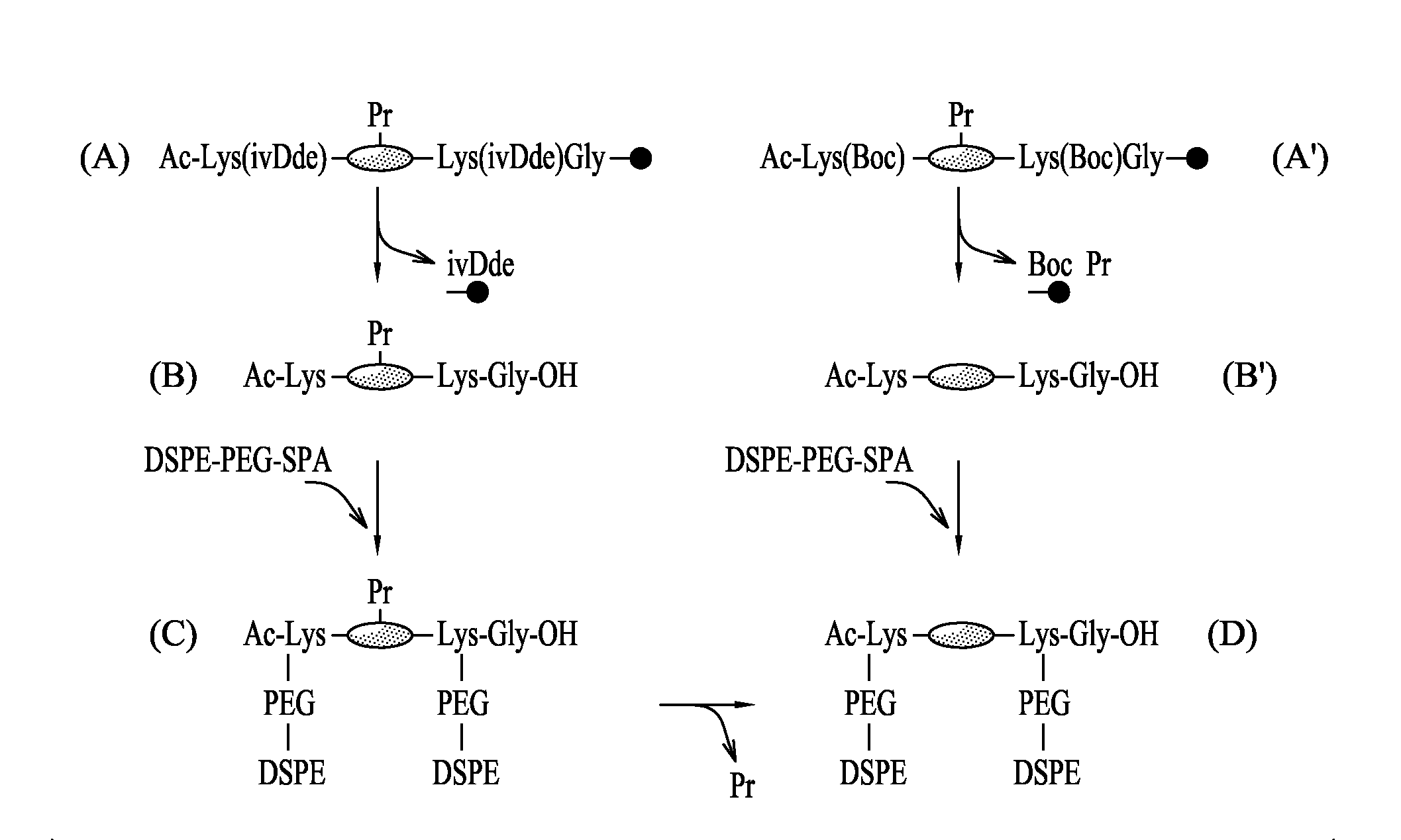Therapeutic vaccine targeted against p-glycoprotein 170 for inhibiting multidrug resistance in the treatment of cancers
a cancer and pglycoprotein technology, applied in the direction of fused cells, drug compositions, immunological disorders, etc., can solve the problems of drug resistance remaining an obstacle to obtaining better cure rates, tumor cells may not respond to chemotherapy, and de novo multidrug resistance is unfortunately common in several types of solid tumors
- Summary
- Abstract
- Description
- Claims
- Application Information
AI Technical Summary
Benefits of technology
Problems solved by technology
Method used
Image
Examples
examples
I-1 Preparation of the Conjugates Formed by Covalent Bonding Between the Peptide Region and the Molecules of Fatty Acid Containing a Carbon Chain of Between C12 and C24.
[0160]The synthesis of the peptides was carried out at a peptide synthesizer, for example an Applied Biosystem 430A synthesizer, using (13,14)-tert-butyloxycarbonyl / benzyl and, in situ, activation with (N-[(1H-benzotriazol-1-yl)(dimethylamino)methylene]-N-methylmethanaminium hexafluorophosphate N-oxide (Schölzer M. et al. Science 1992, 256 (5054): 221-225) Advanteously, the peptides were then coupled covalently with four molecules of palmitic acid per molecule of peptide (FIG. 2).
[0161]An improved method of synthesis allowing more effective production of certain amino acids by avoiding their involvement in early terminating reactions has been developed. This is particularly advantageous in the case of mpp1due to its length (43 amino acids). In particular, the peptides mpp1, mpp2 and mpp4 were synthesized and the resu...
PUM
| Property | Measurement | Unit |
|---|---|---|
| molecular weight | aaaaa | aaaaa |
| molecular weight | aaaaa | aaaaa |
| immunogenic composition | aaaaa | aaaaa |
Abstract
Description
Claims
Application Information
 Login to View More
Login to View More - R&D
- Intellectual Property
- Life Sciences
- Materials
- Tech Scout
- Unparalleled Data Quality
- Higher Quality Content
- 60% Fewer Hallucinations
Browse by: Latest US Patents, China's latest patents, Technical Efficacy Thesaurus, Application Domain, Technology Topic, Popular Technical Reports.
© 2025 PatSnap. All rights reserved.Legal|Privacy policy|Modern Slavery Act Transparency Statement|Sitemap|About US| Contact US: help@patsnap.com



